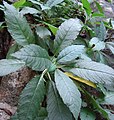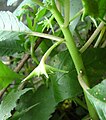
Shivaji University established in 1962, is a state university located at Kolhapur, Maharashtra, India. The university, with a campus spread over 853 acres, is named after Chhatrapati Shivaji, founder of the Maratha Empire. It was inaugurated on 18 November 1962 by Sarvepalli Radhakrishnan, the then president of India. Yashwantrao Chavan and Balasaheb Desai took the lead in establishing this university. Educational institutions from Kolhapur, Sangli, and Satara districts come under its jurisdiction with 279 affiliated colleges and recognised institutes. One of the major objectives behind its foundation was to cater to the educational needs of South Maharashtra region. The University's efforts towards excellence are being recognised by the substantial grants received from funding agencies such as University Grants Commission (India), Department of Science and Technology (India), and DBT. The university is self reliant in water, which is stored on campus during the rainy season. It has a biodiversity-rich campus.

Mesua ferrea, the Ceylon ironwood, or cobra saffron, is a species in the family Calophyllaceae. This slow-growing tree is named after the heaviness and hardness of its timber. It is widely cultivated as an ornamental due to its graceful shape, grayish-green foliage with a beautiful pink to red flush of drooping young leaves, and large, fragrant white flowers. It is native to wet, tropical parts of Sri Lanka, India, southern Nepal, Burma, Thailand, Indochina, the Philippines, Malaysia and Sumatra, where it grows in evergreen forests, especially in river valleys. In the eastern Himalayas and Western Ghats in India it grows up to altitudes of 1,500 m (4,900 ft), while in Sri Lanka up to 1,000 m (3,300 ft). It is national tree of Sri Lanka, state tree of Mizoram and state flower of Tripura.
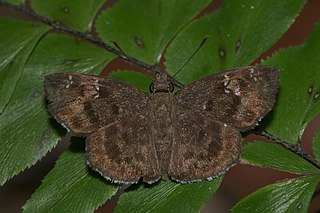
Sarangesa dasahara, the common small flat, is a butterfly belonging to the family Hesperiidae found in Indomalayan realm.

Robert Wight MD FRS FLS was a Scottish surgeon in the East India Company, whose professional career was spent entirely in southern India, where his greatest achievements were in botany – as an economic botanist and leading taxonomist in south India. He contributed to the introduction of American cotton. As a taxonomist he described 110 new genera and 1267 new species of flowering plants. He employed Indian botanical artists to illustrate many plants collected by himself and Indian collectors he trained. Some of these illustrations were published by William Hooker in Britain, but from 1838 he published a series of illustrated works in Madras including the uncoloured, six-volume Icones Plantarum Indiae Orientalis (1838–53) and two hand-coloured, two-volume works, the Illustrations of Indian Botany (1838–50) and Spicilegium Neilgherrense (1845–51). By the time he retired from India in 1853 he had published 2464 illustrations of Indian plants. The standard author abbreviation Wight is used to indicate this person as the author when citing a botanical name.

Trichopus zeylanicus is a small herbaceous plant, which is one of only two species of its genus, Trichopus. Formerly it was placed in its own family, Trichopodaceae, but is now included in the family Dioscoreaceae. The leaves are about 20 centimetres (7.9 in) long and grow from a rhizome. The shape of the leaves can be highly variable even within one location, but the most common shape is cordate. The herb grows on sandy soil near rivers and streams in shady places in lowland and intermediate altitude forests. It flowers year long and the fruits are thought to be dispersed by water. The unusual flowers are purplish black.

Allophylus zeylanicus is a species of plant in the family Sapindaceae. It is endemic to Sri Lanka.

Mangifera zeylanica or “Sri Lanka wild mango” is a wild species of mango tree endemic to Sri Lanka. This stately tree is the tallest member of the mango genus, Mangifera, and one of the two tallest trees in the family Anacardiaceae. The mango fruits are edible and have an excellent taste. It is called "aetamba" (ඇටඹ) or "wal amba" in Sinhala and “kaddu-ma” in Tamil. The well-known British botanist and explorer Joseph Dalton Hooker first described the tree in 1876.
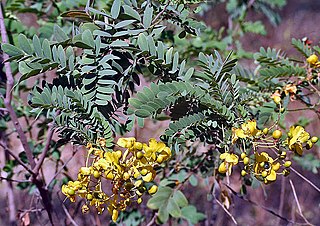
Senna auriculata is a leguminous tree in the subfamily Caesalpinioideae. It is commonly known by its local names matura tea tree, avaram or ranawara, or the English version avaram senna. It is the State flower of Telangana. It occurs in the dry regions of India and Sri Lanka. It is common along the sea coast and the dry zone in Sri Lanka.
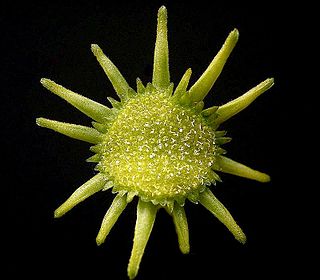
Dorstenia is a genus within the mulberry family, Moraceae. Depending on the author, there are said to be 100 to 170 species within this genus, second only in number to the genus Ficus within Moraceae. Dorstenia species are mainly known for their unusual inflorescences and growth habits. Dorstenia is named in honor of the German physician and botanist Theodor Dorsten (1492–1552). The type species is Dorstenia contrajerva.

Dorstenia contrajerva is a plant species in the family Moraceae. It is native to Northern South America and Central America, and is cultivated elsewhere. The species name "contrajerva" is the Latinized form of the plant's Spanish name, "contrahierba," a name for plants used for treating poisoning and venomous bites and stings, and for which its rootstocks are used in folk medicine. It is the type species of the Dorstenia genus and was first described by Carl Linnaeus in 1753.
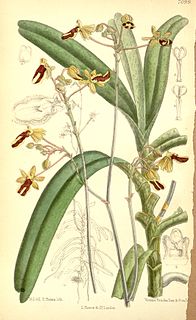
Cottonia is a monotypic genus of flowering plants from the orchid family, Orchidaceae: the only known species is Cottonia peduncularis. It is native to India and Sri Lanka. The genus was erected by Robert Wight and named after Major F. Cotton, an amateur botanist who served in the Madras Engineer Group and collected the species from Tellichery.

Acronychia pedunculata is a large shrub or small tree of the understory, gaps and fringes of low country and lower hill tropical forests of tropical Asia. Leaves: elliptic to subolong, often with tapered base. Twigs more or less angular, glabrous. Flowers: greenish white; I-acillary, corymbose panicles, about 14 mm (0.6 in) across in inflorescences of 4–24 cm (2–9 in) wide. Flowering: February–April, July–August. The fruits are cream to brownish yellow drupes, slightly angled, 0.5–1.5 cm (0.2–0.6 in) in diameter with a short apiculate tip. Leaves and fruits, and other parts of the plant, contain aromatic oils with a resinous scent. In Sri Lanka, the flowering time is February–April and July–August.

Cleghornia is a genus of plants in the family Apocynaceae; its various species are distributed in Borneo, China, Laos, Malaysia, Sri Lanka, Thailand, and Vietnam.
Diospyros ovalifolia, known as bastard ebony, is a tree in the family, Ebenaceae, endemic to the leeward side of South Sahyadri of Western Ghats of India and Sri Lanka.

Anna Maria Walker and her husband Colonel George Warren Walker (1778–1843) were Scottish botanists in Ceylon who made extensive collections of plants between 1830 and 1838. Several species of ferns and orchids were named after them by Sir William Jackson Hooker with whom they corresponded. They also corresponded with and collaborated with other botanists in the region such as Robert Wight. Anna Maria was also an excellent botanical artist who illustrated many species of orchids. Plant species named after them include Vanilla walkeriae, Liparis walkeriae and Thrixspermum walkeri.
Isonandra lanceolata is a plant in the family Sapotaceae. The specific epithet lanceolata means "spear-shaped", referring to the leaves.
Although a parliamentary democracy, Indian politics has increasing become dynastic, possibly due to the absence of a party organization, independent civil society associations that mobilize support for the party, and centralized financing of elections. The dynastic phenomenon is seen from national level down to district level. One example of dynastic politics has been the Nehru–Gandhi family which produced three Indian prime ministers. Family members have also led the Congress party for most of the period since 1978 when Indira Gandhi floated the then Congress(I) faction of the party.Dynasticism is fairly common also in many political parties in Maharashtra. The ruling Bharatiya Janata Party also features several senior leaders who are dynasts.However, the phenomenon of dynastism is at much lower level in the BJP than the Congress party. In Maharashtra, the NCP has particularly high level of dynasticism.

Nothosaerva is a monotypic genus of flowering plants in the family Amaranthaceae containing the single species Nothosaerva brachiata. It is native to India, Sri Lanka, Southeast Asia, and eastern Africa.

Cullenia exarillata is a flowering plant evergreen tree species in the family Malvaceae endemic to the rainforests of the southern Western Ghats in India. It is one of the characteristic trees of the mid-elevation tropical wet evergreen rainforests and an important food plant for the endemic primate, the lion-tailed macaque.

Rungiah aka Rungia or Rungia Raju was a 19th-century Indian botanical illustrator, noted for producing a large number of images for Robert Wight's books on Indian flora. The Raju family were painters of the Kshatriya caste of Tanjore, and were originally from the Telugu-speaking region in the state of Andhra Pradesh.





